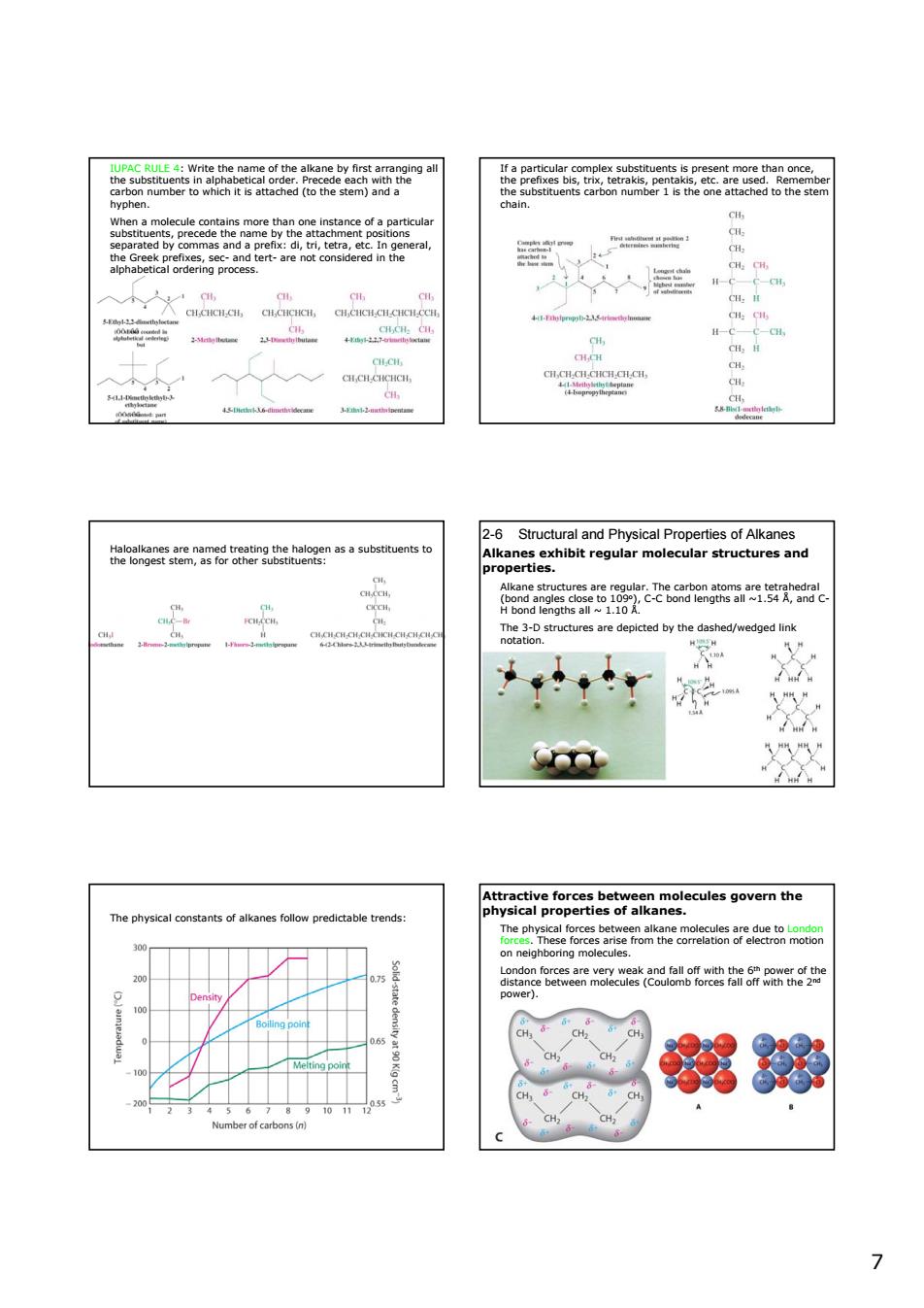正在加载图片...

ts is p phabetical arderina process. 人三 H-C 2-6 Structural and Physical Properties of Alkanes theonu exhibit regular mole cular structures and 路eg The 3-D structures are cted by the dashed/ C 7 7 IUPAC RULE 4: Write the name of the alkane by first arranging all the substituents in alphabetical order. Precede each with the carbon number to which it is attached (to the stem) and a hyphen. When a molecule contains more than one instance of a particular substituents, precede the name by the attachment positions separated by commas and a prefix: di, tri, tetra, etc. In general, the Greek prefixes, sec- and tert- are not considered in the alphabetical ordering process. If a particular complex substituents is present more than once, the prefixes bis, trix, tetrakis, pentakis, etc. are used. Remember the substituents carbon number 1 is the one attached to the stem chain. Haloalkanes are named treating the halogen as a substituents to the longest stem, as for other substituents: 2-6 Structural and Physical Properties of Alkanes Alkanes exhibit regular molecular structures and properties. Alkane structures are regular. The carbon atoms are tetrahedral (bond angles close to 109o), C-C bond lengths all ~1.54 Å, and CH bond lengths all ~ 1.10 Å. The 3-D structures are depicted by the dashed/wedged link notation. The physical constants of alkanes follow predictable trends: Attractive forces between molecules govern the physical properties of alkanes. The physical forces between alkane molecules are due to London forces. These forces arise from the correlation of electron motion on neighboring molecules. London forces are very weak and fall off with the 6th power of the distance between molecules (Coulomb forces fall off with the 2nd power)